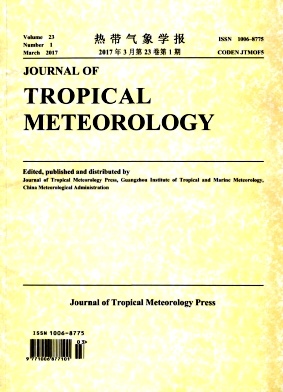ANALYSIS OF STRUCTURE EVOLUTION AND ENVIRONMENTALCONDITIONS OF TROPICAL CYCLONES OVER THE WESTERNNORTH PACIFIC DURING EXTRATROPICAL TRANSITION
doi: 10.16555/j.1006-8775.2017.01.002
- Rev Recd Date: 2017-01-03
Abstract: Fifty-eight extratropical transition (ET) cases in the years 2000-2008, including 2,021 observations (at 6-hour intervals), over the western North Pacific are analyzed using the cyclone phase space (CPS) method, in an effort to get the characteristics of the structure evolution and environmental conditions of tropical cyclones (TCs) during ET over this area. Cluster analysis of the CPS dataset shows that strong TCs are more likely to undergo ET. ET begins with the increment of thermal asymmetry in TCs, along with the generation and intensification of an upper-level cold core, and ends with the occurrence of a lower-level cold core. ET lasts an average duration of about 28 hours. Dynamic composite analysis of the environmental field of different clusters shows that, in general, when TCs move northward, they are gradually embedded in the westerlies and gradually transform into extratropical cyclones under the influence of the mid- and higher-latitude baroclinic systems. As for those TCs which complete ET, there is always much greater potential vorticity gradient in the northwest of them and obvious water vapor transport channels in the environment.
| Citation: | WEI Guo-fei, ZHU Pei-jun, JIANG Jia, et al. ANALYSIS OF STRUCTURE EVOLUTION AND ENVIRONMENTALCONDITIONS OF TROPICAL CYCLONES OVER THE WESTERNNORTH PACIFIC DURING EXTRATROPICAL TRANSITION [J]. Journal of Tropical Meteorology, 2017, 23(1): 15-24, https://doi.org/10.16555/j.1006-8775.2017.01.002 |

















 粤公网安备 4401069904700002号
粤公网安备 4401069904700002号
 DownLoad:
DownLoad: